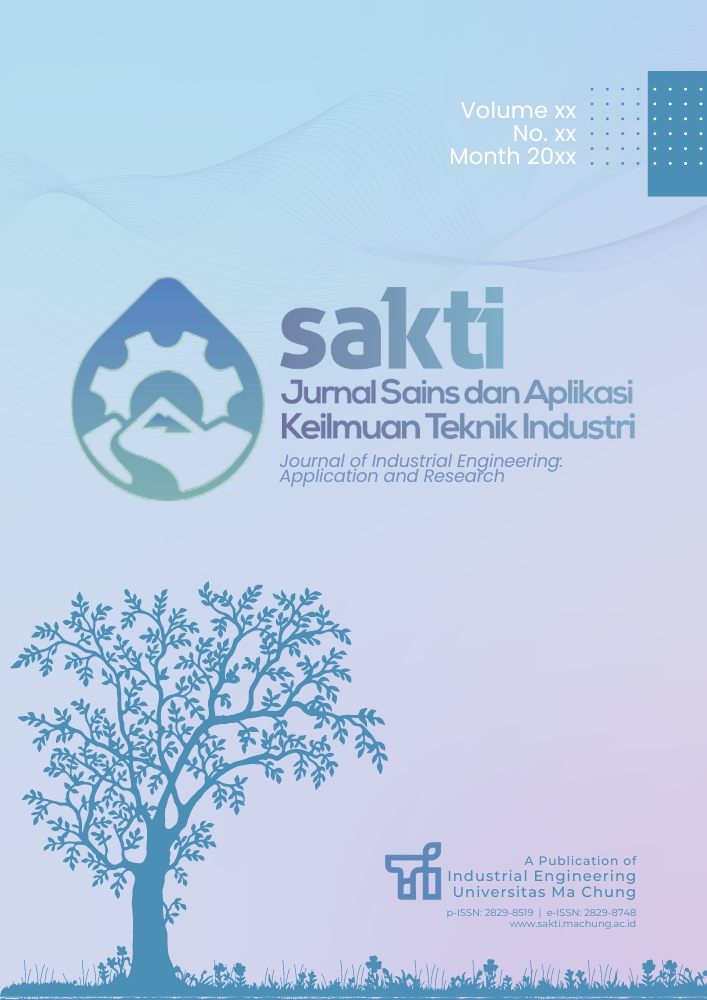Analisis Produktivitas Penggilingan Padi UD Sekar Jaya Menggunakan Metode Multi Factor Productivity Measurement Model (MFPMM)
DOI:
https://doi.org/10.33479/jtiumc.v2i1.18Keywords:
Multi factor productivity measurement model (MFPMM), Productivity improvement, Rice productionAbstract
UD Sekar Jaya is a rice production business that has been operating since 1985 in Bangorejo district, Banyuwangi, East Java. The company sources its raw materials, rice, from various suppliers and also from farmers directly. UD. Sekar Jaya uses rice milling machines, dryers, and kiby machines in its production activities. However, no productivity measurement has been carried out in the production process, and therefore, it is necessary to measure productivity that includes material, labor, and energy. The productivity measurement was only carried out in the production department of premium torch rice. The Multi Factor Productivity Measurement Model (MFPMM) method was used to measure the level of productivity in rice milling or rice production. The results of the MFPMM method showed productivity, price recovery, and profitability from UD Sekar Jaya. After analyzing the results, it was found that the productivity of UD Sekar Jaya has decreased from the material, labor, energy, and total factors. Therefore, productivity improvement implementation was carried out, such as finding good quality rice, increasing tara if the quality of rice is poor, placing workers to examine rice, and implementing a wholesale salary system. Changes in productivity index after the implementation of materials, milling and kiby labor, waste labor, energy, and total input were (1.0087), (1.0828), (1.0828), (1.0352), and (1.099), respectively. This increase indicates that the implementation carried out was successful in improving the productivity of UD Sekar Jaya.
References
Asmoko, H., 2013. Teknik ilustrasi masalah-Fishbone diagrams. 3rd ed. Pusdiklat Pengembangan SDM BPPK. Magelang
Culturianingtyas, Y. A. A., Deoranto, P., Ikasari, D. M., 2014. Analisis produktivitas dengan metode Multi Factor Productivity Measurement Model. Industrial: Jurnal Teknologi dan Manajemen Agroindustri, Volume 3(1), pp. 33-42
Fitriasari, F., 2020. How do Small and Medium Enterprise (SME) survive the COVID-19 outbreak? Jurnal Inovasi Ekonomi, Volume 5(02)
Lestari, E. P. (2010). Penguatan ekonomi industri kecil dan menengah melalui platform klaster industri. Jurnal Organisasi dan manajemen, Volume 6(2), pp. 146-157.
Wazed, M., Ahmed, S., 2008. Multifactor Productivity Measurements Model (MFPMM) as effectual performance measures in manufacturing. Australian Journal of Basic and Applied Sciences, Volume 2(4), pp. 987-996
Downloads
Published
How to Cite
Issue
Section
License
Copyright (c) 2022 Jurnal Sains dan Aplikasi Keilmuan Teknik Industri (SAKTI)

This work is licensed under a Creative Commons Attribution-NonCommercial-NoDerivatives 4.0 International License.









